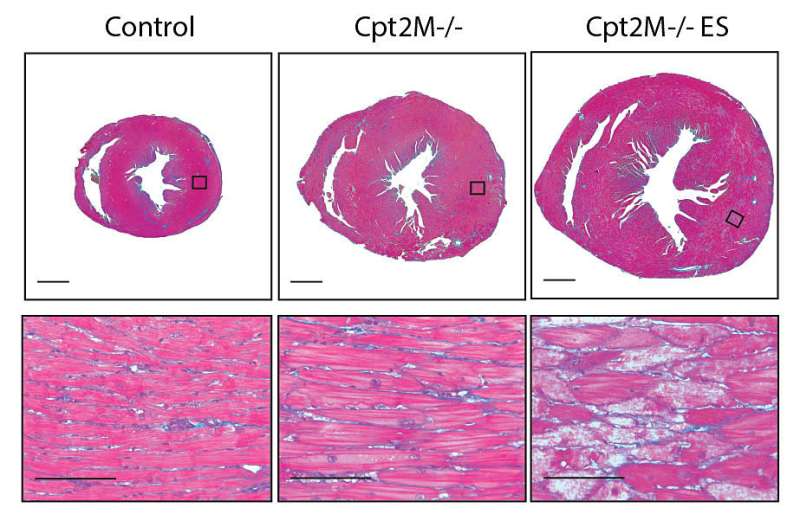Study finds that fat fuel is needed to reverse cardiac hypertrophy

The metabolic triggers that causes enlarged hearts—a condition known as cardiac hypertrophy—remain elusive, but researchers at Purdue University are getting closer to solving this riddle.
Hypertrophic cardiomyopathy, as the condition is known in medical literature, is often associated with high blood pressure (hypertension), obesity, and Type 2 diabetes (three of the conditions that comprise metabolic syndrome), and can result in heart failure and premature death.
According to Jessica Ellis, assistant professor of nutrition science at Purdue University, an enlarged heart sometimes results from and increased work load, such as in pregnant women or in endurance athletes. More commonly, however, cardiac hypertrophy is caused when the heart cells begin to develop a decreasing ability to use their main source of fuel, fatty acids.
Ellis says in this second, chronic form of cardiac hypertrophy, the metabolism becomes "disrupted, abnormal."
"It's not well understood how this happens," Ellis says, "which is why we don't have any good treatments for hypertrophy."
In the Purdue study, which was published recently in the Journal of Biological Chemistry, the research team used a mouse model in which the mice were unable to produce an enzyme used by cardiac cells to burn fatty acids as fuel.
"We believe we found that this fatty acid biochemical pathway is the key linchpin in this process," Ellis says. "What we think this is showing is that we have to fix the cells' ability to use fatty acid in order to fix the heart."
In addition to fatty acids, heart tissue can also use ketones bodies, which, like fatty acids is a type of cellular fuel produced by the liver.
Some of the mice in the study were put on a diet that forced their bodies to produce ketones (i.e., a ketogenic diet).
"We thought that if we could improve their metabolism with the ketogenic diet, perhaps it would also improve the cardiac hypertrophy," Ellis says. "But it did not; thus, ketone bodies cannot substitute for fatty acids as fuel to stop cardiac cell growth.
"So we're learning that the proper breakdown of fatty acids is required to maintain heart function during metabolic syndrome, and when this is disrupted, some sort of metabolites accumulate and signal the unwanted cell growth in the heart," she says. "We, and other research groups, are going to be taking a very close look at that pathway and really picking it apart to find out exactly where that happens and what those metabolites are, so we can begin work on treatments."
More information: Andrea S. Pereyra et al. Loss of cardiac carnitine palmitoyltransferase 2 results in rapamycin-resistant, acetylation-independent hypertrophy, Journal of Biological Chemistry (2017). DOI: 10.1074/jbc.M117.800839
Journal information: Journal of Biological Chemistry
Provided by Purdue University



















